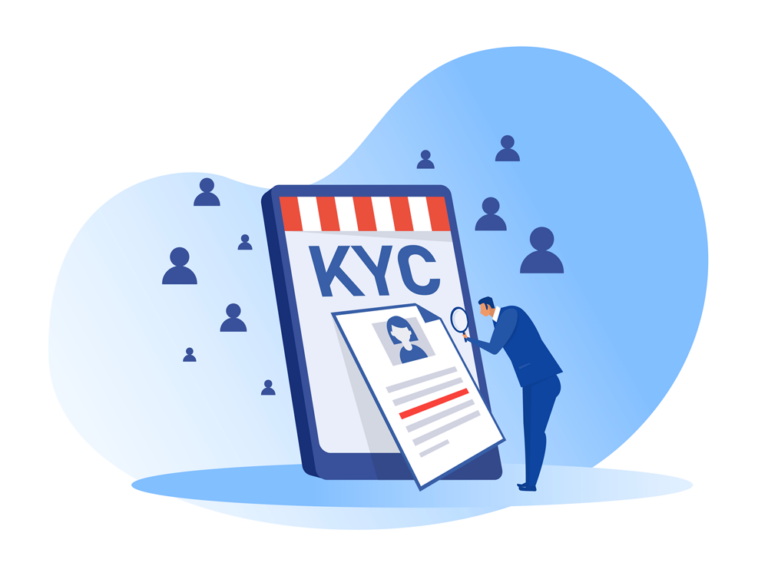As brands worldwide reel from the shocks created by a variety of challenges such as the pandemic, geopolitics, the energy crisis and shifts in consumer behavior (digital expectations and needs), it has become ever more critical to be able to flex their creative muscles far further than previously thought. Being a laggard in a landscape rife with changing technologies means coming unarmed to a full-scale battlefield.
As 2023 dawns, bringing with it a consumer base armed with knowledge and an insatiable demand for instant gratification, what does it take to become a “Digitally Attractive Brand“, stand out, and be in sync with the customers’ digital expectations?
The Customer-Centric, Digitally-Enabled Future
Disruptions create opportunities. As we witnessed during the pandemic, the switch from the traditional way of operating to being more digital-centric happened at a breakneck speed.
The increased popularity of social media and higher rates of adoption of e-commerce have accelerated the way we build connections and execute transactions.

Brands were able to showcase fine details like what happens behind the scenes on their social media pages, and to display a more humane, and authentic side which in turn captured the viewers’ attention. So many changes happened, but most importantly, it heightened the customers’ habit with going digital.
The rate of interaction that consumers had with brands and companies through the digital realm has skyrocketed during the pandemic. For example, US e-commerce sales hit $735 billion through the first nine months of 2022, up by 8.3% from $678 billion in the first three quarters of 2021 (1). According to research by eMarketer and Statista, online retail sales will reach $6.51 trillion by 2023, with e-commerce websites taking up to 22.3% of the total sales (2). 89% of all companies have already adopted a digital-first business model or plan to do so. As per a survey, 60% of American consumers say that they prefer digital self-service tools, such as an online knowledge base, app or chatbot, for customer support (3). All of this goes to say that the shift to a digital-centric economy has become entrenched in the customer’s mind.
The Modern Brand, in sync with the Customer Needs
While it is difficult to predict what exactly may be waiting around the bend in 2023, it’s plain as day that the recent trends in digital adoption are here to stay. This will have a great impact on the way a modern brand will operate and do business in 2023. So, what does it take a brand to be digitalworthy in 2023? Let’s explore.
» Building a differentiated customer experience strategy
When Instagram started in 2010, nobody ever thought that it would transform gradually into an online marketplace. With the advancement in technology, online marketplaces have mushroomed, with over 24 million sites globally (4).
While competition would be the biggest obstacle to achieving growth, perhaps the best way that a brand can connect to its audience is by having a differentiated customer experience strategy.

In this age of information overload, how is your brand creating a unique, and exciting experience for the consumer? Is it through creating goods and services that are personalized or is it using celebrity social media influencers who are relevant to your brand’s market niche, or both? How you differentiate your customer experience will be critical in standing out from the competition. For example, New Balance recently partnered with Snapchat to launch a new AR-focused ad push for the holidays, which has audio prompts to discover unique, and relevant products. It facilitates a more immersive, and engaging experience to the customer.
» Omnichannel becomes the norm
As physical retail starts to see a strong uptick in traffic, brands who can offer a hybrid between online and offline channels and ensure consistency in brand experience across both mediums, will reap rewards.
In the retail industry, concepts like “phygital” retail, and BOPIS (Buy Online Pick Up In Store) are everywhere. Consumers themselves have become phygital, existing both in the digital and physical world. Brands must adapt to meet the consumer where they are, at the right time, and with the right offer.

Research from Forrester anticipates that 70% of retail sales will be digitally influenced in the coming years (5), making it clear that developing an integrated shopping experience is crucial to the success of a brand. The case with the hospitality industry is a perfect example: a customer must be able to read and write reviews and buy through whichever channel, the way they prefer. By providing customers with what they need through multiple touchpoints, a brand creates more Engagement and Loyalty.
» Increasing Relevance of Social Media & UGC (User Generated Content)
The digital era has paved the way for more powerful customers who are able to have their voices heard across multiple geographies and demographics all from the convenience of their home. A brand must leverage this trend of shoppers becoming the new salespeople.
Almost 53% shoppers say UGC, like images customers share on social media, makes them more confident in their purchase decision than professional photography (6).
UGC can be organic, (posted by friends or family) or paid (by influencers, ads). Social media channels with their creator communities of millions produce all types of marketing content that people have instant access to. This is accentuated by the power of instant communication that brands and influencers have with their audiences. A recent study found that 76% of luxury travelers selected their hotel brand, cruise line, or airline based on social media, whereas 60% said they had purchased travel based on a social media post by a celebrity or influencer (7).
» Investing in technologies enabling positive Customer Experience (CX)
With the pandemic reshaping customer experiences, investing in innovative digital technology that consistently creates and delivers positive, thoughtful, and memorable customer journeys would be one of the fastest ways to grow. According to Metrigy, more than 65% of companies say they are increasing CX spending by 2023, by an average of 24%. Also, 73% of consumers cite experience as an important factor in their purchasing decisions, right behind price and product quality (8). In addition to tools like websites, chatbots, and social media; AR (augmented reality), voice and conversational User Interface (UI), VR (virtual reality), 3D product visualization, contactless customer experience, etc. will power digital customer satisfaction.
» Data Analytics
The valuable data that a brand gathers about a customer works not just to deliver targeted ads but also to help form deep relationships with the customer and improve various touchpoints that they encounter.
In the hospitality industry, a shift to online trip planning has opened more avenues for data gathering.

With travelers increasingly using meta search engines like Kayak, TripAdvisor, etc. for rate comparisons and planning, the data that hotels collect about the customers becomes an opportunity to capture a greater share of the market as demand grows. Meta search engines wouldn’t be able to gather the finer customer details gathered as much as a hospitality brand does when a customer is at one of its properties. And by leveraging the finer details like the type of services a guest uses while onsite, a more personalized guest experience can be provided.
Digital Assessment of Brands
Since the modern customer is digital, it is not enough to evaluate a brand simply by the quality of its product/service, but also by how digitally equipped they are to meet the evolving customer’s expectations. But, how do you measure how much a brand has invested into its digital efforts?
AT Worthy does exactly this. We believe that digital adoption is transforming humanity for the better.
By helping entities measure their “Digital Worthiness” through a rating system, we prepare them to improve their digital customer experience and help equip them for the digital-centric economy.
The rating is calculated through a self-answered questionnaire that uses intelligent algorithms and AI to generate a score on a grade from 1 to 5 @ symbols.

The questionnaire is specific to each industry segment and provides a trustworthy rating based on six major categories – Web, Mobile, Connectivity, Digital Property, Digital Media, and Customer Relations.
Digital Worthiness, which is at the core of the digital rating system, is an effective attribute to showcase to potential clients. It also serves as a guideline for brands to improve their investments in the six different Customer Experience dimensions. Along with the rating, AT Worthy also provides badges and certificates to display, a tailored Analytics Dashboard, a Public Profile, and much more.
Sources & References
(1) digitalcommerce360.com – US ecommerce grows 10.8% in Q3 2022
(2) shopify.com – Global Ecommerce Explained: Stats and Trends to Watch
(3) forbes.com – 40 Stats On Digital Transformation And Customer Experience
(4) wpforms.com – 68 Useful eCommerce Statistics You Must Know in 2022
(5) prnewswire.com – Retail In 2023: How Shopping Is Evolving
(6) bazaarvoice.com – Meet shoppers in all the moments that matter
(7) traveldailynews.com – Forbes Travel Guide and Jerne launch creator economy partnership
(8) metrigy.com – Factors Influencing Strong CX Spending in 2023





